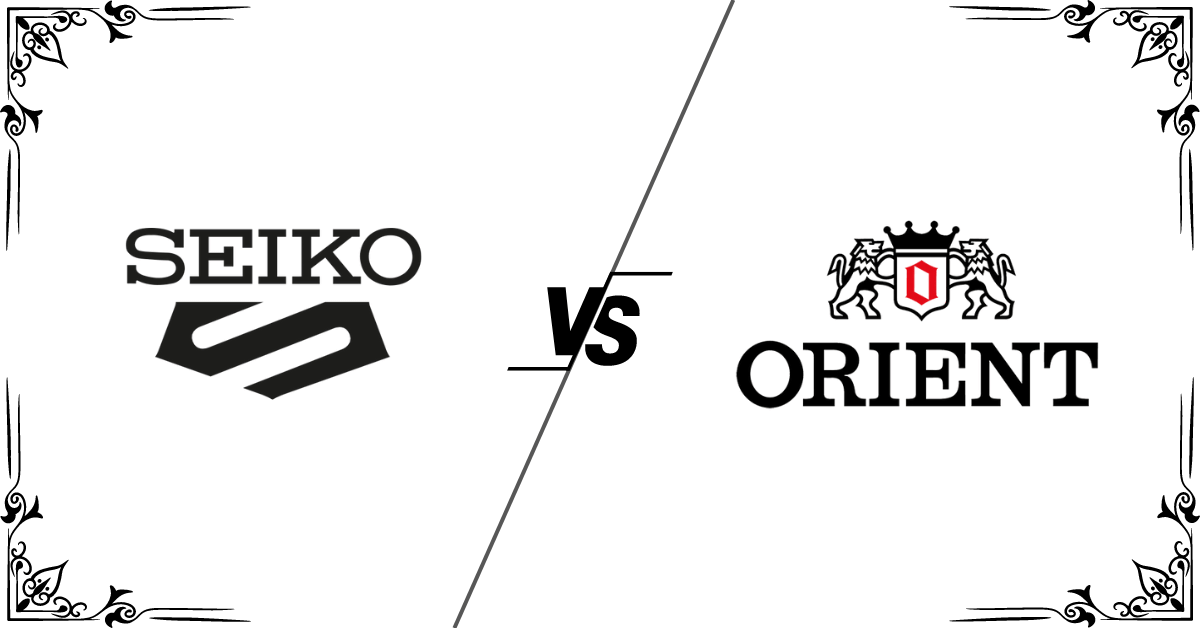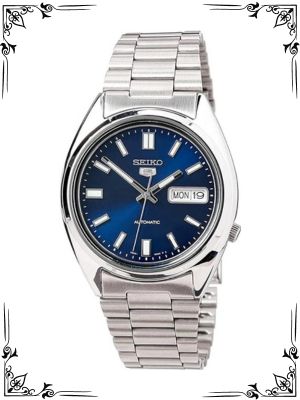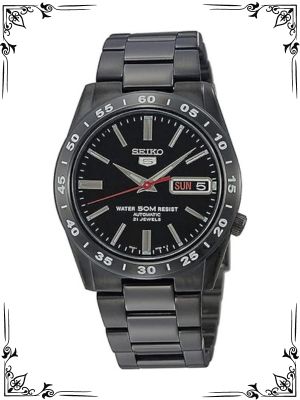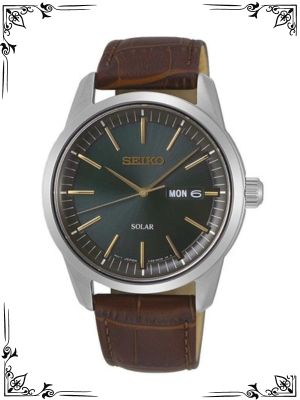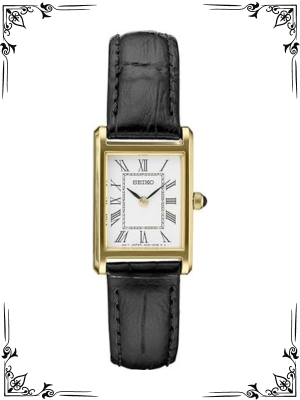When discussing Japanese watchmaking, two brands often come to the forefront: Orient and Seiko. Both have rich histories, extensive collections, and legions of loyal fans. This detailed comparison will explore the histories, innovations, product lines, and distinctions of Orient and Seiko.
We will also answer some frequently asked questions to help you make an informed decision if you are considering a watch from either of these prestigious brands.
Brief History of Orient
Orient was founded in 1950, although its roots can be traced back to 1901 when Shogoro Yoshida opened a watch shop in Ueno, Tokyo. Yoshida’s shop initially focused on selling imported pocket watches, but as demand grew, he began producing his own timepieces.
The company underwent several transformations, and by 1950, it was officially named Orient Watch Company, Limited.
Orient quickly gained recognition for producing reliable and affordable mechanical watches. In the 1970s, during the quartz crisis, while many companies shifted to quartz movements, Orient continued to prioritize mechanical watches. This decision helped the brand carve out a niche for itself among enthusiasts who appreciated traditional watchmaking.
Brief History of Seiko
Seiko, on the other hand, has a longer history that dates back to 1881 when Kintaro Hattori opened a shop selling and repairing watches and clocks in Tokyo. In 1892, Hattori expanded his business to start producing clocks under the name Seikosha, which means “House of Exquisite Workmanship.” By 1924, the first Seiko-branded wristwatches were being produced.
Seiko is known for its numerous innovations, including the introduction of the world’s first quartz watch, the Seiko Quartz Astron, in 1969. This pioneering effort set the stage for Seiko’s reputation as an innovator in watchmaking technology. Seiko has since expanded into various segments, including luxury, sports, and professional watches.
Innovations and Technologies
Orient’s Technological Contributions
Orient has consistently focused on mechanical watchmaking. Some of their notable technological contributions include:
In-House Movements: Unlike many watch brands that source their movements from external suppliers, Orient produces its own in-house movements. This allows for greater control over quality and innovation.
Orient Star Skeleton: The Orient Star series includes skeleton watches that showcase the intricate workings of mechanical movements, reflecting the brand’s dedication to traditional watchmaking.
Power Reserve Indicators: Many Orient watches feature power reserve indicators, a useful complication that shows the amount of power remaining in the watch’s mainspring.
Seiko’s Technological Contributions
Seiko’s contributions to watchmaking are vast and include several groundbreaking innovations:
Quartz Technology: Seiko revolutionized the watch industry with the introduction of the world’s first quartz watch in 1969. The accuracy and affordability of quartz watches changed the landscape of watchmaking.
Spring Drive: Seiko’s Spring Drive movement combines the high torque of a mechanical watch with the accuracy of quartz regulation. This hybrid movement is known for its smooth, gliding second hand.
Kinetic Technology: Seiko developed Kinetic technology, which uses the motion of the wearer’s wrist to generate electrical energy to power the watch, combining the convenience of quartz with the self-sufficiency of automatic watches.
GPS Solar: Seiko’s Astron series features GPS Solar technology, allowing watches to receive signals from GPS satellites to adjust the time and date automatically, ensuring precision no matter where you are in the world.
Product Lines and Collections
Popular Orient Watches
Orient offers a variety of watch collections, catering to different tastes and preferences. Some of the most popular Orient watches include:
Orient Bambino: Known for its classic design and affordable price, the Bambino series features elegant dress watches with domed crystals and vintage aesthetics.
Orient Mako and Ray: These are popular dive watches, appreciated for their robustness, water resistance, and value for money. They are equipped with in-house automatic movements and are available in various styles.
Orient Star: This is Orient’s premium line, offering higher-end models with more refined finishing, intricate movements, and complications such as power reserve indicators and open-heart designs.
Orient Kamasu: Another beloved dive watch series, the Kamasu is praised for its sapphire crystal, improved lume, and overall build quality.
Popular Seiko Watches
Seiko’s extensive range of watches includes models for virtually every need and taste. Some of the most popular Seiko watches are:
Seiko 5: The Seiko 5 series is known for its durability, reliability, and affordability. These automatic watches feature a distinctive design and are a favorite among collectors and everyday wearers.
Seiko Prospex: The Prospex line includes professional-grade sports watches designed for diving, aviation, and other adventurous activities. Models like the Seiko Turtle and Seiko Samurai are particularly popular.
Seiko Presage: The Presage collection offers mechanical watches with refined, classic designs. These watches often feature enamel or porcelain dials and showcase Seiko’s craftsmanship.
Seiko Astron: As the first watch to use GPS Solar technology, the Astron series represents the pinnacle of Seiko’s technological innovation. These watches adjust to your local time zone automatically and are powered by light.
Quality and Craftsmanship
Materials and Build Quality
Both Orient and Seiko are known for their commitment to quality, but they approach it in slightly different ways.
Orient: Orient watches typically feature stainless steel cases, mineral crystals (though some models have sapphire crystals), and well-crafted dials. The brand is known for its robust build quality, especially considering the price point. The higher-end Orient Star models boast superior materials and finishing, including sapphire crystals and more intricate dials.
Seiko: Seiko offers a wider range of materials across its various collections. Entry-level models may use hardlex crystals, a proprietary Seiko material, while higher-end models use sapphire crystals. Seiko’s attention to detail is evident in its case finishing, dial design, and overall build quality, with luxury models featuring materials like titanium and ceramic.
Movement and Accuracy
Orient: Orient prides itself on producing in-house movements. These mechanical movements are known for their reliability and longevity. While not as highly decorated as some Swiss counterparts, they offer excellent performance for the price.
Orient’s automatic movements typically have a power reserve of around 40 hours and are accurate to within +/- 10 to 30 seconds per day.
Seiko: Seiko offers a variety of movements, from basic quartz and automatic to advanced Spring Drive and Kinetic movements. The accuracy of Seiko’s quartz watches is typically within +/- 15 seconds per month, while their automatic movements offer similar accuracy to Orient’s.
Spring Drive movements, found in higher-end models, boast an impressive accuracy of +/- 1 second per day.
Market Position and Pricing
Orient’s Market Position
Orient is positioned as an affordable yet high-quality watch brand. It appeals to enthusiasts who appreciate mechanical watches without the hefty price tag. Orient’s pricing strategy makes it an attractive option for those looking for their first mechanical watch or for collectors seeking value-driven pieces. The brand’s strong focus on in-house movements and traditional watchmaking adds to its appeal.
Seiko’s Market Position
Seiko occupies a broad market spectrum, ranging from affordable entry-level watches to high-end luxury timepieces. The brand’s extensive product range allows it to cater to a diverse audience, from casual wearers to serious collectors. Seiko’s reputation for innovation, quality, and design consistency enhances its market position, making it a globally recognized and respected brand.
Design and Aesthetics
Design Philosophy of Orient
Orient’s design philosophy emphasizes classic and timeless aesthetics. The brand often draws inspiration from vintage watch designs, resulting in elegant and understated timepieces. Key design elements include:
- Domed Crystals: Many Orient watches, especially the Bambino series, feature domed crystals that add a touch of vintage charm.
- Clean Dials: Orient watches often have minimalistic and well-balanced dials, making them versatile and suitable for various occasions.
- Traditional Elements: The use of traditional watchmaking elements, such as dauphine hands, Roman numerals, and textured dials, reflects the Orient’s focus on classic design.
Design Philosophy of Seiko
Seiko’s design philosophy varies across its different collections, allowing for a wide range of styles. Key design characteristics include:
- Functional Aesthetics: Seiko watches, especially those in the Prospex line, prioritize functionality and legibility, with features like large hands, bold markers, and luminescent materials.
- Elegant Craftsmanship: The Presage collection showcases Seiko’s dedication to craftsmanship, with intricate dial patterns, enamel, and porcelain finishes.
- Innovative Designs: Seiko’s Astron and Spring Drive models feature modern and innovative designs, reflecting the brand’s forward-thinking approach to watchmaking.
User Experience and Customer Feedback
Reviews and User Feedback for Orient
Orient watches generally receive positive reviews from both enthusiasts and casual wearers. Users often praise:
- Value for Money: Many reviewers highlight the excellent value Orient watches offer, combining in-house movements with affordable pricing.
- Build Quality: The robust construction and durability of Orient watches are frequently mentioned as strong points.
- Design: Orient’s classic and elegant designs are appreciated by those seeking timeless timepieces.
However, some users note that:
- Limited Availability: In some regions, finding specific Orient models can be challenging.
- Bracelet Quality: The quality of the bracelets on some lower-end models can be a point of criticism.
Reviews and User Feedback for Seiko
Seiko watches are also well-regarded, with feedback often highlighting:
- Innovation: Users appreciate Seiko’s continuous innovation and the variety of movements available, from quartz to Spring Drive.
- Durability: Seiko’s reputation for producing durable and reliable watches is a common theme in reviews.
- Design Variety: The wide range of designs and styles allows users to find a Seiko watch that suits their preferences.
Criticisms of Seiko watches include:
- Price Variability: Some users find the pricing across different collections to be inconsistent.
- Hardlex Crystal: While durable, Seiko’s use of Hardlex instead of sapphire crystal on some models is seen as a drawback by some buyers.
Comparative Analysis
Strengths and Weaknesses of Orient
Strengths:
- In-House Movements: Provides control over quality and innovation.
- Affordable Pricing: Offers excellent value for money.
- Classic Designs: Timeless aesthetics appeal to a wide audience.
Weaknesses:
- Limited Availability: Harder to find in some regions.
- Bracelet Quality: Lower-end models may have less impressive bracelets.
Strengths and Weaknesses of Seiko
Strengths:
- Innovative Technology: Leading in quartz, Kinetic, and Spring Drive movements.
- Wide Range of Products: Appeals to various market segments.
- Global Recognition: Strong brand reputation and recognition.
Weaknesses:
- Price Inconsistency: Variability in pricing can be confusing.
- Hardlex Crystal: Preference for sapphire crystal over Hardlex in certain models.
FAQs
Are Orient watches as reliable as Seiko watches?
Yes, Orient watches are generally considered to be as reliable as Seiko watches. Both brands are known for their quality and durability, and Orient’s in-house movements are highly regarded. Seiko’s extensive history of innovation and quality also ensures that its watches are dependable.
Ultimately, both brands offer reliable timepieces, with the choice often coming down to personal preference and specific model features.
What are the differences in movement between Orient and Seiko watches?
Orient primarily focuses on mechanical movements, producing all of its movements in-house. These movements are known for their reliability and affordability. Seiko, on the other hand, offers a wider variety of movements, including quartz, automatic, Kinetic, and Spring Drive.
Seiko’s innovations in movement technology, such as the Spring Drive’s combination of mechanical and quartz elements, set it apart from many competitors.
Which brand offers better value for money?
Both Orient and Seiko offer excellent value for money but in different ways. Orient is often praised for providing high-quality mechanical watches at very affordable prices, making it an excellent choice for those looking to start their collection or find a reliable daily wearer.
Seiko, with its broader range of products, offers value across various price points, from affordable entry-level watches to high-end luxury models. The better value depends on what specific features and price range you are looking at.
How do Orient and Seiko watches compare in terms of design?
Orient watches tend to have classic, timeless designs with a focus on elegance and simplicity. They often feature traditional elements like domed crystals and clean dials.
Seiko offers a more diverse range of designs, from the functional and robust Perspex series to the elegant and refined Presage collection. Seiko also incorporates more modern and innovative designs in its higher-end models, such as the Astron and Spring Drive watches.
Which brand is more suitable for collectors?
Both brands have their appeal to collectors but for different reasons. Orient is attractive to collectors who appreciate affordable mechanical watches with classic designs and in-house movements. Seiko, with its broader range of models and technological innovations, offers something for every collector.
From the iconic Seiko 5 series to the technologically advanced Grand Seiko models, Seiko has a wide array of collectible watches that cater to different tastes and interests.
Conclusion
In conclusion, Orient and Seiko are both prestigious Japanese watch brands that have made significant contributions to the world of horology.
Orient is known for its focus on affordable mechanical watches with classic designs, while Seiko offers a wider range of timepieces, including groundbreaking innovations and luxury models. Both brands provide excellent value for money and are renowned for their reliability and quality.
Whether you are a seasoned collector or a first-time buyer, choosing between Orient and Seiko will largely depend on your specific preferences, budget, and the features you prioritize in a watch. Both brands have rich histories, and owning a watch from either will surely be a rewarding experience.

